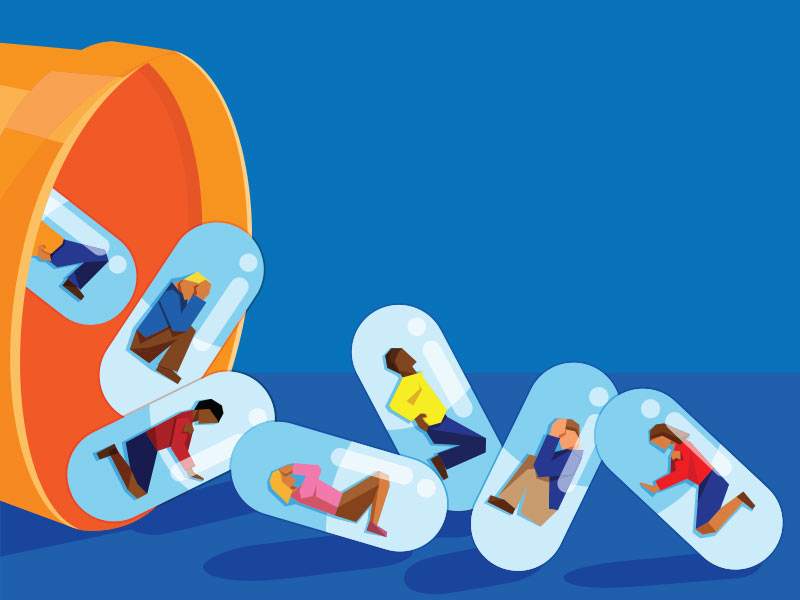

Demi Lovato’s drug overdose and Anthony Bourdain’s suicide resulted in unequal news coverage of national help hotlines, finds a new study published in JAMA Internal Medicine.
While Americans tweeted in high volumes and searched for topics relating to Demi Lovato and drugs after the pop singer’s hospitalization for an alleged heroin overdose in the summer of 2018, a small proportion of those engagements mentioned the free national helpline that could provide lifesaving resources.
“Only 10 percent of Americans who need substance abuse treatment resources receive it,” says Mark Dredze, the John C. Malone Associate Professor of Computer Science at the Johns Hopkins University and a co-author on the study.
“Our study wanted to assess public awareness and engagement with the Substance Abuse and Mental Health Services Administration (SAMHSA) national helpline (1-800-662-HELP) following a widely reported drug overdose.”
SAMHSA is the only free, federally managed and endorsed drug treatment referral service in the United States, helping callers find the best local services that match their needs.
To understand how reporters encouraged the public to engage on the nation’s drug crisis, how the public shared resources on Twitter, and how they sought out help on Google during the week following Lovato’s overdose (July 24 through July 30, 2018), the research team analyzed media trends.
The team counted news reports, and tweets, and searches mentioning “Lovato,” “opioid” or “heroin,” and 1-800-662-HELP and its various spellings were tallied. Because internet searchers may not know the helpline number, all searches for opioid or heroin AND helpline or help were included in the latter category.
The team replicated this process for the week after chef and television host Anthony Bourdain’s suicide on June 8, 2018, substituting Bourdain, suicide, and the National Suicide Prevention Lifeline (1-800-273-TALK) where appropriate, for comparison.
While the public engaged with Lovato’s overdose in record numbers, there was little to no discussion on how to address this crisis using 1-800-662-HELP.
For instance, only 216 of 42,500 news reports archived on Google News mentioning Lovato and 25,300 news reports mentioning opioids or heroin cited 1-800-662-HELP. The pattern was similar on Twitter where nearly a million posts were made about Lovato and just 258 of them mentioned 1-800-662-HELP.
After Bourdain’s suicide, the researchers found 4,940 news stories, 20,900 tweets and 29,000 searches for the National Suicide Lifeline, reflecting 22.9, 81.0, and 3.6 times greater volume than engagement following Lovato’s overdose.
“Exactly when people need free, lifesaving resources like 1-800-662-HELP, people don’t know they exist. That’s a problem we must fix now,” said John Ayers, vice chief of innovation at the UC San Diego Division of Infectious Disease and Global Public Health and the study’s first author.
In 1999, the World Health Organization created guidelines for covering suicide in the media. The WHO’s advice included having news reporters mention suicide helpline numbers in their stories.
The research team suggests similar methods be applied to 1-800-662-HELP and drug overdose cases, using a three-pronged strategy: First, reporters covering drugs should include 1-800-662-HELP in their stories. Second, media companies should create space for showcasing 1-800-662-HELP. Third, the nation should invest in promotional strategies to increase awareness of 1-800-662-HELP, akin to past efforts on smoking cessation helplines such as the Tips from Former Smokers campaign.
“If you search for suicidal ideation terms, the top link is to the suicide lifeline and you can start a chat online or by phone. But if you search for ‘how to stop using drugs’ no such link exists. We must change that,” adds Dredze.

